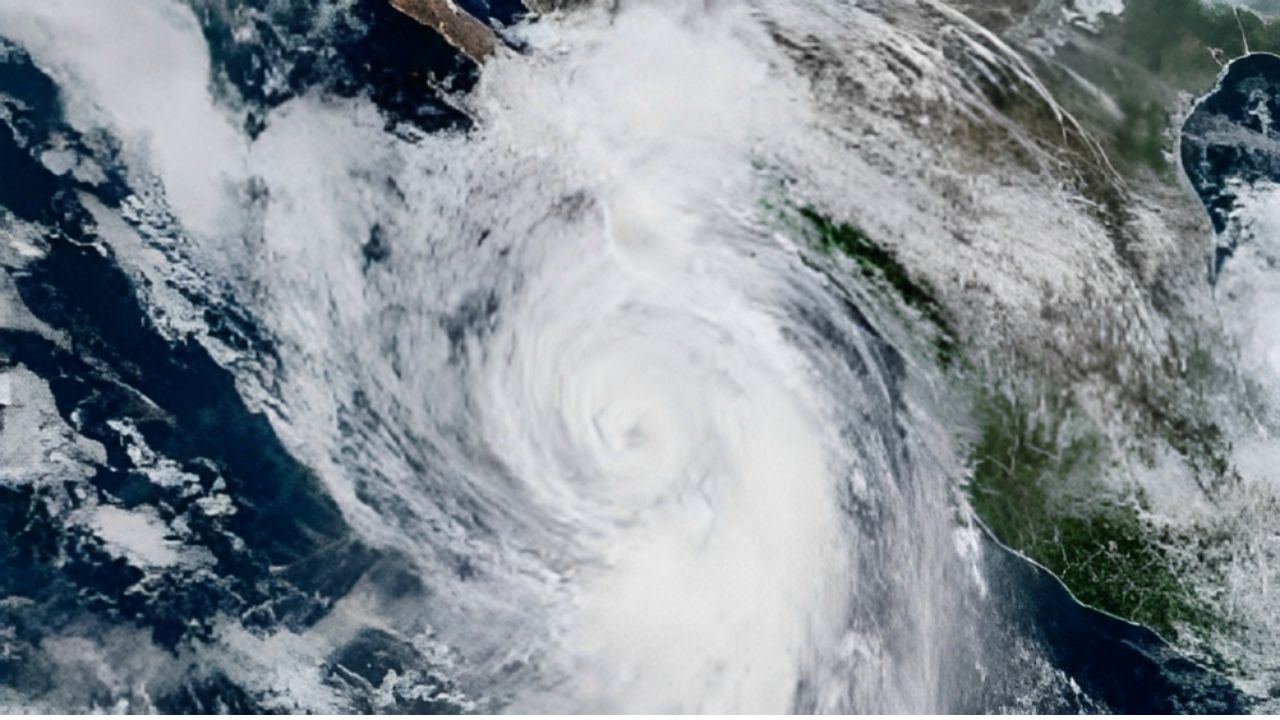Unprecedented Threat The year 2023 has proven to be a year of surprises, as the weather patterns around the world have been far from typical. In a shocking twist, meteorologists are currently monitoring an unprecedented situation – a hurricane on a collision course with Southern California. Historically, hurricanes have rarely ventured this far west, leaving the region largely untouched by their devastating impacts. However, the convergence of multiple atmospheric factors has set the stage for a potentially catastrophic event, with forecasts predicting heavy rain, high winds, and intense heat. This article delves into the science behind this unusual occurrence, the potential implications for the region
Unprecedented Threat Convergence of Factors
Hurricanes, also known as tropical cyclones or typhoons, are typically associated with warm ocean waters and the Coriolis effect. These systems gather energy from the warm water and use the Earth’s rotation to develop into powerful storms. Southern California, situated along the Pacific coast of the United States,
has historically been sheltered from the direct path of these storms due to its cool ocean currents and the prevailing wind patterns.
However, the convergence of several atmospheric anomalies has defied conventional wisdom. A high-pressure system over the eastern Pacific has created a unique blocking pattern, preventing the hurricane from turning out to sea as they normally would. This high-pressure zone has essentially trapped the hurricane and steered it towards Southern California, defying all expectations and historical precedents.
Potential Impacts: Heavy Rain, High Winds, and Heat
The impending hurricane poses a triple threat to Southern California: heavy rain, high winds, and scorching heat. Each of these elements has the potential to wreak havoc on the region’s infrastructure, environment, and residents.
- Heavy Rain: Southern California is known for its semi-arid climate, with low annual rainfall. The sudden influx of heavy rain from the hurricane could lead to flash floods, landslides, and overwhelmed drainage systems.
- The region’s typically dry terrain may not be equipped to handle such a deluge,
- potentially resulting in widespread damage to roads, buildings, and property.
- High Winds: The hurricane’s wind speeds are predicted to be much higher than what the area is accustomed to. Trees, power lines, and structures not built to withstand hurricane-force winds could be severely impacted. The potential for widespread power outages and damage to infrastructure is a serious concern.
- Intense Heat: While hurricanes are often associated with rain and wind the intense heat they bring is often overlooked. The warm, moist air circulating within the storm system can contribute to elevated temperatures. In combination with Southern California’s existing arid conditions, this could elevate the risk of wildfires. The unusual juxtaposition of a hurricane’s rain and heat could paradoxically contribute to fire risks.
also read this : Lil Tay 2023 : The Tragic Loss of a Young Rap Prodigy and Social Media Sensation
Preparedness and Mitigation
The impending threat has triggered a race against time for authorities and residents to prepare and mitigate the potential impacts. Emergency response teams, including local governments, disaster relief organizations, and law enforcement, are collaborating to formulate contingency plans.
- Evacuation Plans Coastal areas prone to storm surges and flooding are being urged to develop evacuation plans.
- Infrastructure Reinforcement: Utility companies are working to reinforce power lines, communication networks, and critical infrastructure. Preemptive measures include trimming trees that could potentially fall on power lines and shutting off gas lines in areas prone to flooding.
- Sandbag Distribution: Many local governments are distributing sandbags to residents, particularly in flood-prone areas. Sandbags can help redirect water flow and protect properties from flooding.
- Wildfire Prevention: To counteract the potential increase in wildfire risk, fire departments are on high alert. Public awareness campaigns are being rolled out to educate residents about fire prevention measures and safe practices during the storm.
- Community Engagement: Governments are leveraging social media and community outreach programs to keep residents informed about the hurricane’s progress and safety measures. Clear communication is crucial to ensure that accurate information reaches the public in a timely manner.
Conclusion
As the world witnesses an Unprecedented Threat weather event in the form of an approaching hurricane to Southern California,
the region faces a challenge unlike any before. The convergence of atmospheric factors has defied conventional predictions, requiring swift and comprehensive action to mitigate the potential impact. While meteorologists continue to monitor the hurricane’s trajectory,
it’s a stark reminder that climate patterns are evolving, and no region is truly immune to the forces of nature. Through coordinated efforts, advanced planning, and community resilience,
Southern California stands a better chance at navigating this unique threat and emerging stronger on the other side.



